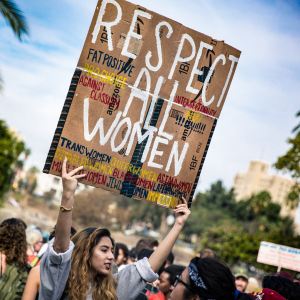Just days ago, T. Clay Buck, CFRE, asked a survey question on Twitter:
An informal poll for any who identify as female and also contribute philanthropically. If you are the primary gift giver and are in a relationship, have you ever been listed secondarily or as ‘Mr. and Mrs.’ even though you made the gift?”
While far from being a scientific study, Buck’s poll found that 82 percent of the 68 respondents answered “Yes,” indicating they were recognized inappropriately. Despite not being statistically reliable, the results are sufficiently striking to indicate that the nonprofit sector has a donor-recognition problem.
 I’m not surprised. This is the flip side of a problem I’ve talked about on many occasions. Charities often treat women as second-class donor prospects. Now, we see that some nonprofits also treat women as second-class donors.
I’m not surprised. This is the flip side of a problem I’ve talked about on many occasions. Charities often treat women as second-class donor prospects. Now, we see that some nonprofits also treat women as second-class donors.
These problems might be due to carelessness. Or, it could be that some fundraisers are gender biased. Regardless, the way in which some charities treat female prospects and donors is offensive. It’s also stupid. The reality is that women are more philanthropic, in many respects, than men are. Therefore, charities would be wise to immediately address the way they engage with female prospects and donors.
Although I’ve written in the past about gender differences when it comes to philanthropy, I want to highlight some insights from professionally conducted, valid research that underscore the importance of working more effectively with prospects and donors who are women.
A whitepaper from Optimy, Women in Philanthropy, reveals:
- Women make 64% of charitable donations.
- Women donate 3.5% of their wealth, on average, while men contribute 1.5%.
- Women account for 45% of American millionaires.
- Women will control 2/3 of the total American wealth by 2030.
- Women are also playing a greater role in philanthropy because of the growth in Giving Circles. Of the 706 Giving Circles reviewed, women led 640.
- Women made up 77% of foundation professional staff in 2015.
For more insights from Optimy about the role of women in philanthropy and a look at what motivates female donors, download the FREE report by clicking here.
When it comes to planned giving, women are critically important according to a Fidelity Charitable Gift Fund study I first cited in my book, Donor-Centered Planned Gift Marketing:
- High-income women (those with an annual household income of $150,000 or more) demonstrate a high-level of sophistication in their giving by seeking expert advice.
- High-income women are more likely to use innovative giving vehicles such as donor-advised funds and charitable remainder trusts. 16% of high-income women have or use a donor-advised fund, charitable remainder trust, or private foundation, versus 10% of high-income men.
- 7% of high-income women made charitable gifts using securities, versus 3% of high-income men.
Yes, both men and women are valuable contributors to charities who we should cherish. Unfortunately, far too many charities fail to fully appreciate the vital role that women play when it comes to philanthropy. Women are often ignored as solid donor prospects deserving of attention. When women do give, they are often denied the respect and recognition they deserve as Buck’s poll suggests.
Here are some questions to consider as you review your own organization’s donor recognition procedures:









 While men contribute generously to nonprofit organizations, women are building and acquiring greater levels of wealth that will allow them to be larger donors. Here are just a few facts to contemplate:
While men contribute generously to nonprofit organizations, women are building and acquiring greater levels of wealth that will allow them to be larger donors. Here are just a few facts to contemplate: